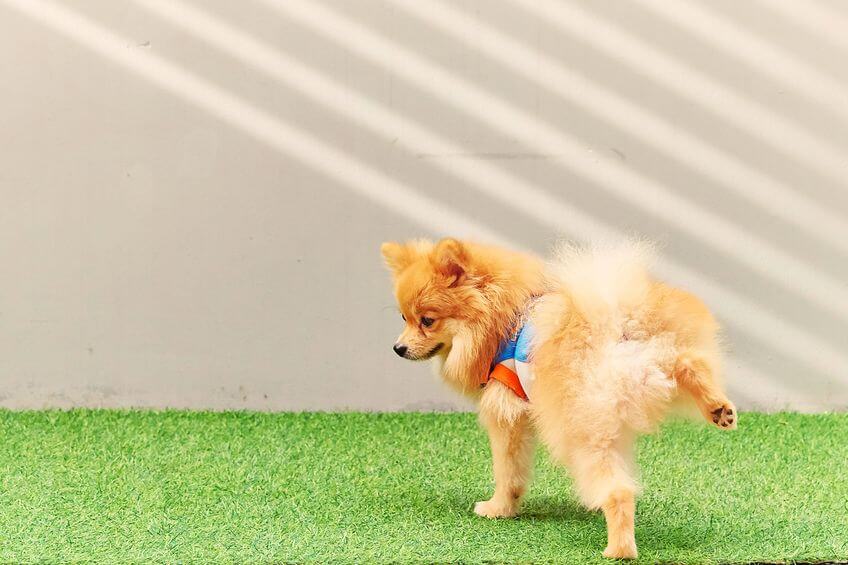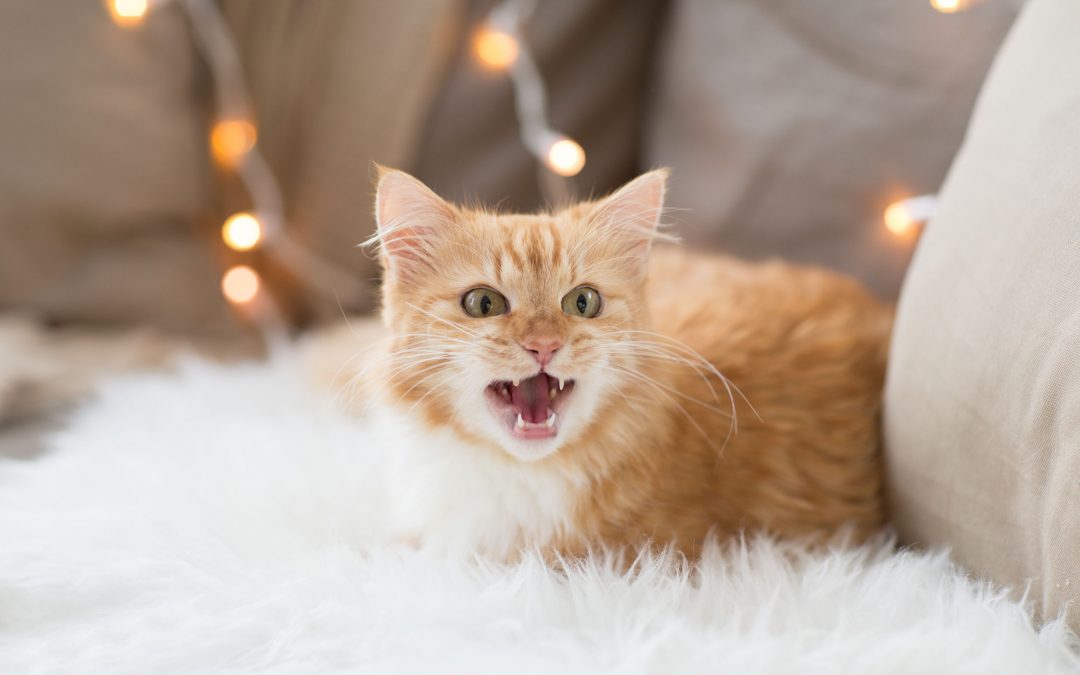The easiest way to potty train your new puppy is to have plenty of patience and a lot of love. Training a dog, no matter what their age may be, takes some effort. But as long as you stay patient and use positive reinforcement, potty training a puppy doesn’t need to be stressful.
Potty training a puppy takes time, just like potty training children. Be ready for a lot of quick dashes to the backyard. Just remember to put in the work, give plenty of love, and there’s a good chance your training will go smoothly and quickly.
Here are a few potty training tips that will have your pup doing their business outside as soon as possible.
How Long Will It Take To Potty Train My Puppy?
There’s no set-in-stone time frame when it comes to training a puppy not to go potty inside your home. Several factors go into how long it will take for potty training to be successful.
 How diligent you are during the puppy training process is a key factor. As long as you stick with the plan, there’s no reason why your pup can’t be fully house trained within a few months. If the dog hasn’t had any indoor accidents in a month, there’s a fair chance that your training has worked.1
How diligent you are during the puppy training process is a key factor. As long as you stick with the plan, there’s no reason why your pup can’t be fully house trained within a few months. If the dog hasn’t had any indoor accidents in a month, there’s a fair chance that your training has worked.1
Once you start potty training, you can probably assume it will take about six months to complete the process. Puppies, like children, in a way, learn at their own pace. It’s not an exact science. Some puppies develop bladder control faster than others. The smaller the breed, the more often they will need to “go” because food and liquid goes through their bodies faster than in larger dogs.2
When it comes to puppies, potty training girls is usually a little bit easier than training boys. The process will usually go faster. The reason is that female dogs mature faster than males. That doesn’t mean they’re smarter. It just means they learn faster.3
Be Ready To Take Your Puppy Outside After Eating Or Drinking
 It’s important to start potty training as soon as you can once you bring your pup home. When you potty train a puppy, you need to be ready to act within 15-20 minutes after the pup eats or drinks. That’s the average length of time until the pup needs to go to the bathroom.4
It’s important to start potty training as soon as you can once you bring your pup home. When you potty train a puppy, you need to be ready to act within 15-20 minutes after the pup eats or drinks. That’s the average length of time until the pup needs to go to the bathroom.4
Your pup’s age will have a lot to do with their ability to control their bladder. Add one hour for each month, then add another hour. A 3-month old puppy, for example, should be able to hold it for four hours. But you shouldn’t wait that long unless you absolutely have to. Try to wait no longer than an hour or two before taking your pup outside.5
Potty Training Must-Haves: A Crate Can Be Your Best Friend
A crate should be at the top of your potty training readiness checklist. The reason is crate training can be a powerful potty training method for your puppy. Now, supervision is extremely important when it comes to potty training a puppy. But you can’t stay at home 24/7, and you obviously have to sleep. A crate could go a long way toward ensuring your pup doesn’t have accidents elsewhere in your home.
 A crate offers a safe environment for your pup. It may also act as a deterrent from going inside. Dogs will typically try to avoid soiling the area right next to where they sleep. So, if you put a small pet bed inside the crate, you might help avoid an accident.6
A crate offers a safe environment for your pup. It may also act as a deterrent from going inside. Dogs will typically try to avoid soiling the area right next to where they sleep. So, if you put a small pet bed inside the crate, you might help avoid an accident.6
There are a few other tools you should have on hand during the training process.
- Keep a leash within easy reach when it’s time to take the pup outside. This will help ensure that your pup goes potty rather than running off in the yard to play.
- Treats will also be important. When your puppy does what they’re supposed to do, treats may help reinforce that good behavior.
- Accidents happen, so keep some potty pads and odor and stain remover on hand for quick clean-ups. The faster you clean up the mess, the less of a chance the pup will decide that’s the spot where they should go.7
Routine Is Important, But You Should Also Train A Puppy To Let You Know When They Need To Go
 Having a set routine that you stick with is critically important when it comes to your puppy’s housetraining. You’ll need to take your pup outside several times a day. This includes not only after eating or drinking but also after they wake up from a nap and after extended play sessions.8
Having a set routine that you stick with is critically important when it comes to your puppy’s housetraining. You’ll need to take your pup outside several times a day. This includes not only after eating or drinking but also after they wake up from a nap and after extended play sessions.8
If possible, keep the crate near your bed. That way, you can take your pup outside if you hear any whimpering, which will usually signify that the puppy needs to go potty. When you wake up, take your puppy outside immediately. Doing this every day at the same time can get the habit ingrained in your dog’s mind. After you and your pup have breakfast, take them outside again.9
Setting up a play area in a secure area of the home can really help if you have to leave home for several hours a day. Here are some additional tips to help you manage puppy potty training.
- Keep your puppy’s crate a good distance away from the potty pads you set down.
- When you get back home, take the pup outside for playtime and potty time.
- Put a bell on the door you use to get to the backyard. Ring it every time you and your pup go out. Eventually, your dog may ring the bell when they need to go.10
Should You Consider Purchasing Special Underwear For Your Pup When Potty Training?
You might have seen ads touting the use of special underwear, or diapers, for dogs that are going through potty training. In most cases, experts will only recommend using underwear for older, incontinent dogs – not puppies.11
Talk to your vet to see if they recommend using this type of potty training method.
The Power Of Positive Reinforcement Instead Of Punishment
 Remember to always give plenty of praise and rewards when your pup eliminates outside. Never punish a puppy for having an indoor accident. The old approach of rubbing a dog’s nose in excrement doesn’t work. All it does is confuse the dog and make things worse. It might even make your dog scared of you.12
Remember to always give plenty of praise and rewards when your pup eliminates outside. Never punish a puppy for having an indoor accident. The old approach of rubbing a dog’s nose in excrement doesn’t work. All it does is confuse the dog and make things worse. It might even make your dog scared of you.12
When you see your puppy getting ready to eliminate, stop them immediately. Make a noise, such as saying “no,” or “outside,” and then take the pup out to the yard. If you notice the dog starting to sniff the ground or walk in circles, there’s a good chance they need to pee or poop.13,14
Hopefully, these potty training tips will help. Just remember that potty training a puppy is a process. Give plenty of praise and plenty of love – just like you would with your children – and you’ll soon be able to get this process behind you for good.
Learn More:
How To Stop A Dog From Jumping On You And Others: Puppy Training
Fun Games To Play With Your Dog That Can Also Help With Training
Tips For Training A Puppy To Grow Into An Obedient Dog: Positive Reinforcement And Love
Sources
- https://www.petmd.com/dog/training/evr_dg_how-to-potty-train-your-dog
- https://www.petfinder.com/dogs/dog-training/how-to-potty-train-a-puppy/
- https://www.petmd.com/dog/puppycenter/adoption/evr_dg_male_or_female_puppy_which_is_better
- http://www.vetstreet.com/our-pet-experts/7-trainer-approved-puppy-housebreaking-tips
- http://www.vetstreet.com/our-pet-experts/7-trainer-approved-puppy-housebreaking-tips
- https://www.whole-dog-journal.com/training/house_training/how-to-potty-train-a-dog/
- https://www.petmd.com/dog/training/evr_dg_how-to-potty-train-your-dog
- https://www.akc.org/expert-advice/training/how-to-potty-train-a-puppy/
- https://www.akc.org/expert-advice/training/potty-training-your-puppy-timeline-and-tips/
- https://www.akc.org/expert-advice/training/potty-training-your-puppy-timeline-and-tips/
- https://www.akc.org/expert-advice/health/everything-you-need-to-know-about-dog-diapers/
- https://www.humanesociety.org/resources/how-housetrain-your-dog-or-puppy
- https://www.humanesociety.org/resources/how-housetrain-your-dog-or-puppy
- https://www.americanhumane.org/fact-sheet/housetraining-puppies-dogs





























